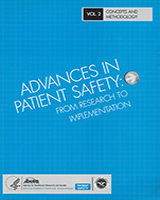NCBI Bookshelf. A service of the National Library of Medicine, National Institutes of Health.
Henriksen K, Battles JB, Marks ES, et al., editors. Advances in Patient Safety: From Research to Implementation (Volume 2: Concepts and Methodology). Rockville (MD): Agency for Healthcare Research and Quality (US); 2005 Feb.

Advances in Patient Safety: From Research to Implementation (Volume 2: Concepts and Methodology).
Show detailsTable 4Change ideas for preventing and minimizing diagnostic error
| Change Idea | Rationale/Description | Challenges |
|---|---|---|
| Upstream feedback to earlier providers who have may have failed to make correct diagnosis |
|
|
| Safety nets to mitigate harm from diagnostic uncertainty and error |
|
|
| Timely and reliable abnormal test result followup systems |
|
|
| Fail-safe protocols for preliminary/resident and definitive readings of tests |
|
|
| Prospectively defining red flag diagnoses and situations and instituting prospective readiness |
|
|
| Automated screening check lists to avoid missing key history, physical, lab data |
|
|
| High-level patient education and engagement with diagnosis probabilities and uncertainties |
|
|
| Test and leverage information technology tools to avoid known cognitive and care process pitfalls |
|
|
- Commentary: how can we make diagnosis safer?[Acad Med. 2012]Commentary: how can we make diagnosis safer?Schiff GD, Leape LL. Acad Med. 2012 Feb; 87(2):135-8.
- Diagnostic error in medicine: analysis of 583 physician-reported errors.[Arch Intern Med. 2009]Diagnostic error in medicine: analysis of 583 physician-reported errors.Schiff GD, Hasan O, Kim S, Abrams R, Cosby K, Lambert BL, Elstein AS, Hasler S, Kabongo ML, Krosnjar N, et al. Arch Intern Med. 2009 Nov 9; 169(20):1881-7.
- A process for developing community consensus regarding the diagnosis and management of attention-deficit/hyperactivity disorder.[Pediatrics. 2005]A process for developing community consensus regarding the diagnosis and management of attention-deficit/hyperactivity disorder.Foy JM, Earls MF. Pediatrics. 2005 Jan; 115(1):e97-104.
- Review Avoiding and identifying errors in health technology assessment models: qualitative study and methodological review.[Health Technol Assess. 2010]Review Avoiding and identifying errors in health technology assessment models: qualitative study and methodological review.Chilcott J, Tappenden P, Rawdin A, Johnson M, Kaltenthaler E, Paisley S, Papaioannou D, Shippam A. Health Technol Assess. 2010 May; 14(25):iii-iv, ix-xii, 1-107.
- Review Translational Metabolomics of Head Injury: Exploring Dysfunctional Cerebral Metabolism with Ex Vivo NMR Spectroscopy-Based Metabolite Quantification.[Brain Neurotrauma: Molecular, ...]Review Translational Metabolomics of Head Injury: Exploring Dysfunctional Cerebral Metabolism with Ex Vivo NMR Spectroscopy-Based Metabolite Quantification.Wolahan SM, Hirt D, Glenn TC. Brain Neurotrauma: Molecular, Neuropsychological, and Rehabilitation Aspects. 2015
- Table 4, Change ideas for preventing and minimizing diagnostic error - Advances ...Table 4, Change ideas for preventing and minimizing diagnostic error - Advances in Patient Safety: From Research to Implementation (Volume 2: Concepts and Methodology)
- CNOT1 CCR4-NOT transcription complex subunit 1 [Homo sapiens]CNOT1 CCR4-NOT transcription complex subunit 1 [Homo sapiens]Gene ID:23019Gene
- Gene Links for GEO Profiles (Select 132629109) (1)Gene
- p90 autoantigen [Homo sapiens]p90 autoantigen [Homo sapiens]gi|15986445|gb|AAL11632.1|AF334474_Protein
- Related DataSets for GEO Profiles (Select 132636817) (1)GEO DataSets
Your browsing activity is empty.
Activity recording is turned off.
See more...